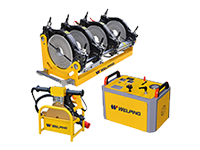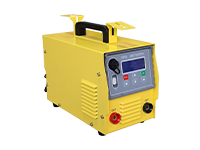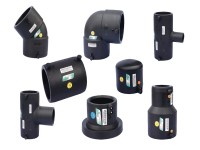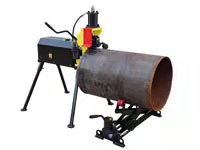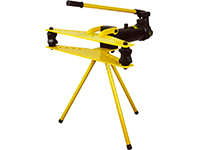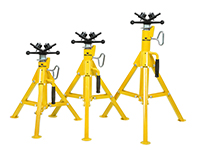HDPE Thermoplastic pipe sizes IPS DIPS mm Chart Conversion
| American Standard Size Nominal Pipe Size IPS (Known as Inches) |
Real Size Outside Diameter (OD) (Inches) |
Real Outside Diameter (OD) (mm) 1 Inch = 25,4 mm |
Closer Metric Pipe size or (mm) (Not the same) |
|---|---|---|---|
| 1/2″ IPS | 0,84″ | 21,34 mm | 20 mm |
| 3/4″ IPS | 1,05″ | 26,67 mm | 25 mm |
| 1″ IPS | 1,32″ | 33,40 mm | 32 mm |
| 1-1/4″ IPS | 1,66″ | 42,16 mm | 40 mm |
| 1-1/2″ IPS | 1,90″ | 48,26 mm | 50 mm |
| 2″ IPS | 2,38″ | 60,33 mm | 63 mm |
| 2-1/2″ IPS | 2,87″ | 72,90 mm | 75 mm |
| 3″ IPS | 3,50″ | 88,90 mm | 90 mm |
| 4″ IPS | 4,50″ | 114,30 mm | 110 mm |
| 5″ IPS | 5,56″ | 141,22 mm | 140 mm |
| 6″ IPS | 6,63″ | 168,28 mm | 160 mm |
| 7″ IPS | 7,13″ | 180,98 mm | 180 mm |
| 8″ IPS | 8,63″ | 219,08 mm | 200 mm |
| 10″ IPS | 10,75″ | 273,05 mm | 250 mm |
| 12″ IPS | 12,75″ | 323,85 mm | 315 mm |
| 14″ IPS | 14,00″ | 355,60 mm | 355 mm |
| 16″ IPS | 16,00″ | 406,40 mm | 400 mm |
| 18″ IPS | 18,00″ | 457,20 mm | 450 mm |
| 20″ IPS | 20,00″ | 508,00 mm | 500 mm |
| 22″ IPS | 22,00″ | 558,80 mm | 550 mm |
| 24″ IPS | 24,00″ | 609,60 mm | 600 mm |
| 25″ IPS | 25,00″ | 630,00 mm | 630 mm |
| 28″ IPS | 28,00″ | 711,20 mm | 700 mm |
| 30″ IPS | 30,00″ | 762,00 mm | 750 mm |
| 32″ IPS | 32,00″ | 812,80 mm | 800 mm |
| 36″ IPS | 36,00″ | 914,40 mm | 900 mm |
| 42″ IPS | 42,00″ | 1066,80 mm | 1000 mm |
| 48″ IPS | 48,00″ | 1219,20 mm | 1200 mm |
| Nominal Pipe Size DIPS (Known as Inches) | Real Size Outside Diameter (OD) (Inches) |
Real Outside Diameter (OD) (mm) 1 Inch = 25.4 mm |
|---|---|---|
| 3″ DIPS | 3,96 in. | 100.584 mm |
| 4″ DIPS | 4.8 in. | 121.92 mm |
| 6″ DIPS | 6.9 in. | 175.26 mm |
| 8″ DIPS | 9.05 in. | 229.87 mm |
| 10″ DIPS | 11.1 in. | 281.94 mm |
| 12″ DIPS | 13.2 in. | 335.28 mm |
| 14″ DIPS | 15.3 in. | 388.62 mm |
| 16″ DIPS | 17.4 in. | 441.96 mm |
| 18″ DIPS | 19.5 in. | 495.3 mm |
| 20″ DIPS | 21.6 in. | 548.64 mm |
| 24″ DIPS | 25.8 in. | 655.32 mm |
| 30″ DIPS | 32 in. | 812.8 mm |
| 36″ DIPS | 38.3 in. | 972.82 mm |
| 42″ DIPS | 44.5 in. | 1130.3 mm |
| 48″ DIPS | 50.8 in. | 1290.32 mm |
| mm Pipe DN Nominal Diameter |
mm OD Outside Diameter |
Closer Inches IPS Pipe size (NOT THE SAME) |
|---|---|---|
| 20 mm | 20.3 mm | 1/2″ IPS = 21.34 mm |
| 25 mm | 25.3 mm | 3/4″ IPS = 26.67 mm |
| 32 mm | 32.3 mm | 1″ IPS = 33.40 mm |
| 40 mm | 40.4 mm | 1-1/4″ IPS = 42.16 mm |
| 50 mm | 50.5 mm | 1-1/2″ IPS = 48.26 mm |
| 63 mm | 63.4 mm | 2″ IPS = 60.33 mm |
| 75 mm | 75.5 mm | 2-1/2″ IPS = 72.90 mm |
| 90 mm | 90.6 mm | 3″ IPS = 88.90 mm |
| 110 mm | 110.7 mm | 4″ IPS = 114.30 mm |
| 140 mm | 140.9 mm | 5″ IPS = 141.22 mm |
| 160 mm | 161 mm | 6″ IPS = 168.28 mm |
| 180 mm | 181.1 mm | 7″ IPS = 180.98 mm |
| 200 mm | 201.2 mm | 8″ IPS = 219.08 mm |
| 250 mm | 249.7 mm | 10″ IPS = 273.05 mm |
| 315 mm | 314.6 mm | 12″ IPS = 323.85 mm |
| 355 mm | 354.2 mm | 14″ IPS = 355.60 mm |
| 400 mm | 399.3 mm | 16″ IPS = 406.40 mm |
| 450 mm | 449.9 mm | 18″ IPS = 457.20 mm |
| 500 mm | 499.4 mm | 20″ IPS = 508.00 mm |
| 550 mm | 563.4 mm | 22″ IPS = 558.80 mm |
| 600 mm | 629.2 mm | 24″ IPS = 609.60 mm |
| 630 mm | 633.8 mm | 25″ IPS = 630.00 mm |
| 700 mm | | 28″ IPS = 711.20 mm |
| 750 mm | | 30″ IPS = 762.00 mm |
| 800 mm | 807.2 mm | 32″ IPS = 812.80 mm |
| 900 mm | 908.1 mm | 36″ IPS = 914.40 mm |
| 1000 mm | 1009.0 mm | 42″ IPS = 1066.80 mm |
| 1200 mm | | 48″ IPS = 1219.20 mm |

